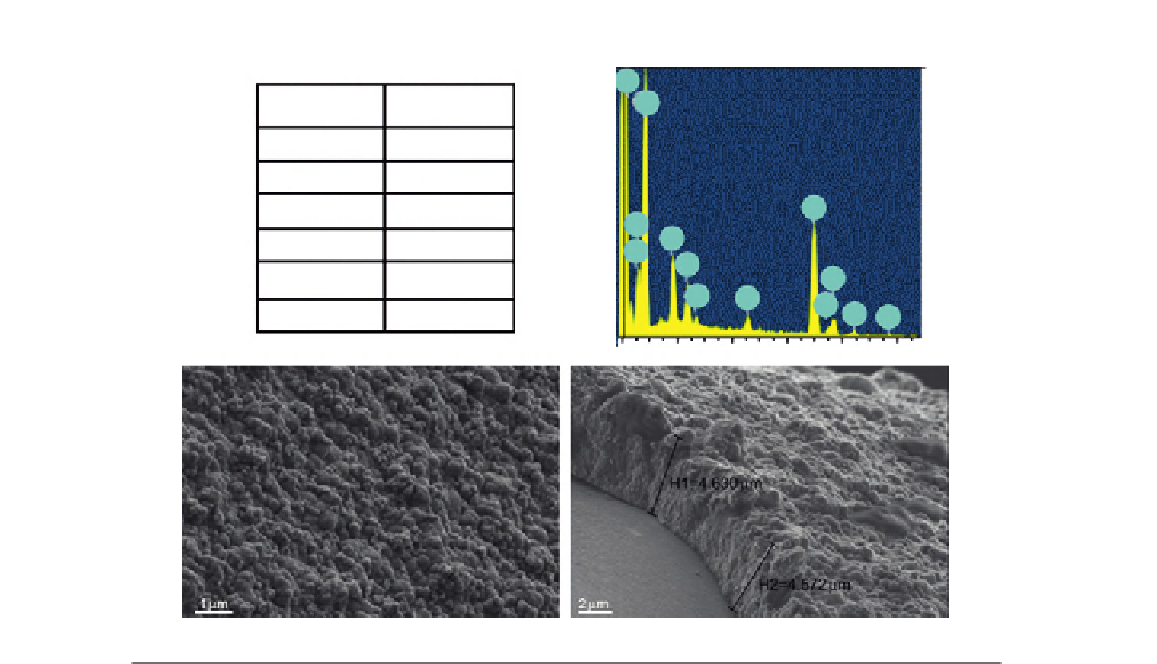Biomedical Engineering Reference
In-Depth Information
Cl
(A)
Co
Atomic%
Element
O
28.41
S
7.00
Co
Cl
1.78
O
Ti
W
Ti
2.91
S
Co
Co
55.38
Cl
Ti
W
W
4.52
W
W
0
2
4
6
8
10
(B)
(C)
FIGURE 13.6
SEM/EDS analysis of the electrodeposited cobalt film onto Ni
Ti surface.
the reduced friction between the coated file and the surrounding. These methods are possibly also
applicable to a variety of other Ni
Ti-based medical devices where fatigue and consequent failure
are of relevance
[38]
.
Figure 13.6
shows the SEM/EDS (energy dispersive X-ray analysis mounted
on scanning electron microscope) analysis of such coatings. A uniform coating a few microns thick
was thus obtained. The atomic ratio of W/Co
12.5 indicates that substantial amount of IF-WS
2
NP was incorporated into these coatings. The surface is rather rough which suggests that the parti-
tion of the IF NP along the Co-film coating is possibly not uniform and the film surface is enriched
with respect to the NP. XRD of the film (
Figure 13.7
) shows again a distinct (0002) peak of the
IF-WS
2
at 14.2
.
B
13.4.3
Coating adhesion and wear
The adhesion of the cobalt coating to the Ni
Ti orthodontic wires was determined by inspecting
the folded wire, which showed excellent integrity of the film (see
Figure 13.8
).
Figure 13.9
shows a scratch test of the Co
1
IF coating with nanoindenter. The test is done by
profiling the surface of
IF film. This is followed
by scratching it with increasing loads up to a maximal value of 30 mN. As a test of the quality of the
coated surface, a final surface profiling shows little variation with respect to the original file surface.
the Ni
Ti
file surface coated with Co
1

